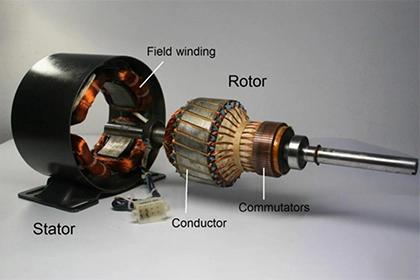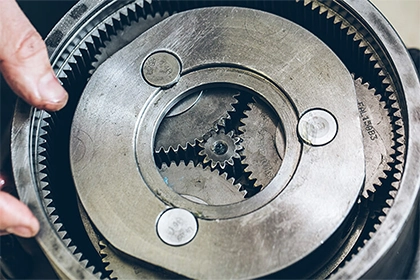
Is the synchronous motor an induction motor?
Synchronous motors, like induction motors (ie, asynchronous motors), are a commonly used AC motor. The synchronous motor is the heart of the power system. It is a component that integrates rotation and stillness, electromagnetic change, and mechanical movement and realizes the conversion of electrical energy and mechanical energy. Performance is greatly affected.
A synchronous motor is a type of electric motor that operates by synchronizing its rotational speed with the frequency of the power supply. This means that the rotational speed of a synchronous motor is directly proportional to the frequency of the power supply, and it is not dependent on the load on the motor.
An induction motor, on the other hand, is a type of electric motor that uses electromagnetic induction to convert electrical energy into mechanical energy. In an induction motor, the rotor rotates because of the interaction between the magnetic fields from the stator and the rotor.
So, is a synchronous motor an induction motor? The answer is no. A synchronous motor is not an induction motor, as it operates using a different principle.
However, there is a type of motor that combines the principles of both a synchronous motor and an induction motor. This type of motor is called a synchronous induction motor , or a self-excited synchronous motor.
A synchronous induction motor is similar to a standard induction motor in that it has a stator and a rotor, and it uses electromagnetic induction to convert electrical energy into mechanical energy. However, it also has a small amount of excitation, which means that the rotor is magnetized and rotates at a speed that is synchronized with the frequency of the power supply.
In other words, a synchronous induction motor combines the principles of a synchronous motor and an induction motor. It has the characteristics of both types of motors, such as the ability to operate at a constant speed and the ability to self-start without the need for an external excitation.
One of the key benefits of a synchronous induction motor is that it has a high power factor, which means that it is able to deliver a large amount of mechanical power with a relatively small input current. This makes it an efficient and cost-effective choice for many applications.
In summary, a synchronous motor is not an induction motor, as it operates using a different principle. However, there is a type of motor that combines the principles of both a synchronous motor and an induction motor, called a synchronous induction motor. This type of motor has the characteristics of both types of motors, and it is an efficient and cost-effective choice for many applications.



Leave a Comment